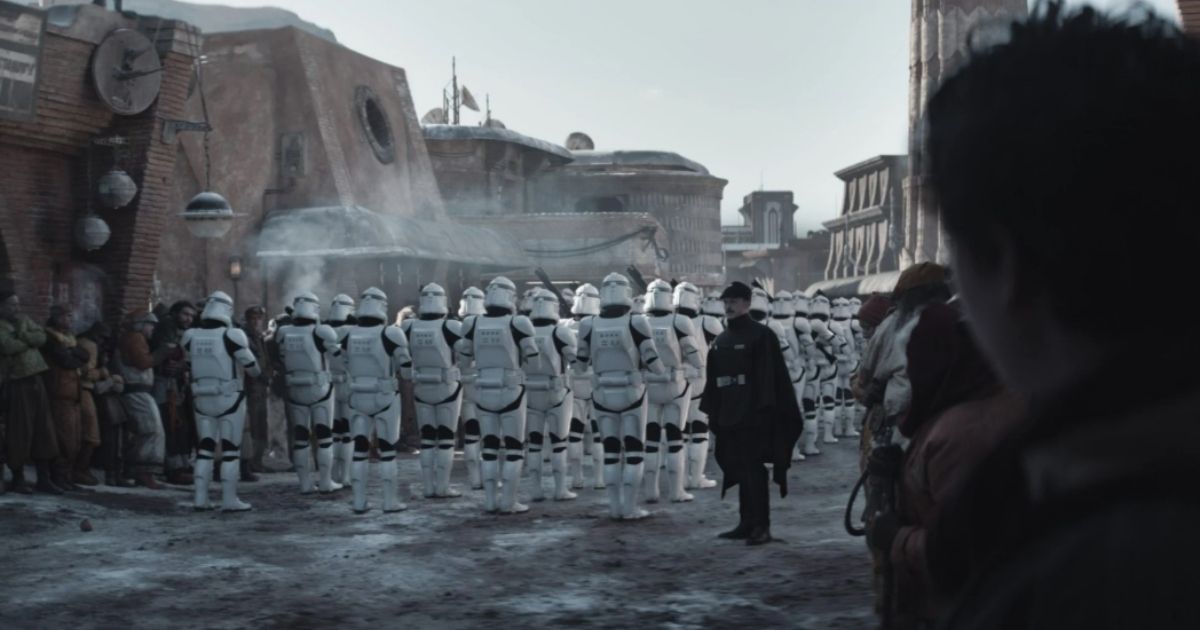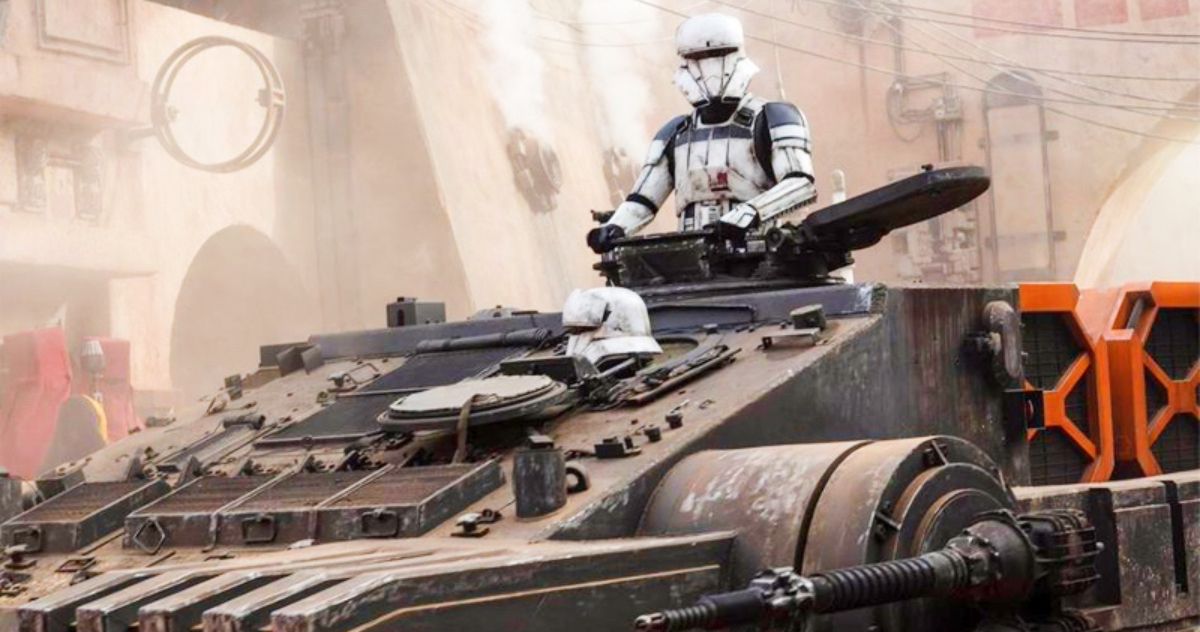Andor was a new kind of Star Wars series that showed us that not every story needed to revolve around the Skywalkers. Instead, what we got from Andor was a creative new take on a conflict that was usually as simple as saying light side vs. dark side. Typically in Star Wars, the Empire is a large, nebulous military organization that controls planetary populations through fear of their giant lasers. In Andor, the Empire had a different strategy for controlling its territory. Series creator Tony Gilroy took a hint from a real empire and showed how people are conquered by erasing their culture.
The macro-conflict in the series, the war that Luthen Rael is fighting, is cultural. The series takes a cue from George Lucas when Imperial Officers are made to look more like Nazis than they ever have before. And the Empire’s efforts to dominate people are targeted specifically at cultural ceremonies. Luthen’s cover even has him running a shop for cultural artifacts, while the closest thing we see to employment in the Empire is a prison of infinite manufacturing. Andor gives us the full spectrum of moral relativism in Star Wars like we’ve never seen, but when it comes down to it, the Empire is evil because it attacks culture in order to control people.
What Makes This Empire Different
When the series starts, Andor’s home planet of Ferrix is controlled by a corporate security force. While it’s managed by the Empire, this corporate organization enforces little control outside of low-level policing. By the end of the series, we see soldiers in the streets and people being forced to hide from their overseers. So, what line does the Empire cross when it begins its takeover of Ferrix?
Every time the Empire expands, they do so by putting a tight leash around a specific group of people. Initially, the Preox-Morlana corporation maintained civil order with a strict yet apathetic police force. They prevented crime but largely let the people do as they pleased. The Empire distinguished itself by creating a system of order that reached more deeply into people’s lives. When Andor’s unfortunate situation on Morlana One created a fiasco that required the Empire to step in, we hear an Imperial officer give the order to stifle any local celebrations or cultural events. And further on in the series, we notice that the Empire demands preapproval if any ceremonies are to be held.
On other planets, we see this pattern of behavior continue. For example, on Aldhani, Cassian and some Rebel freedom fighters execute a heist on the day of a tribal celebration. While preparing for the heist, an Imperial officer explains how the Empire has systematically discouraged the festival from occurring. According to them, doing so has helped the Empire maintain better control over resources and discouraged civil unrest that was once aimed at their facility.
Alternatively, cultural practices aren’t displayed as universally good. We see Mon Mothma’s daughter practicing her cultural traditions to some distaste from her mother. She sits in a classroom with other girls from Chandrila, reciting a vow that promises to regulate her behavior. She recites these words:
“Yielding in acceptance, safe in the braid of the old ways, true and steady and braided in trust, tethered in permanence, in the knot, in the binding."
This specific practice seems cast in a negative light, unlike other customs. And it’s done so because it is yet another form of control. Other traditions, like the tribal festival on Aldhani, or Maarva Andor’s funeral at the end of the series, celebrated nature and life. This oath that Leida Mothma takes discourages free thought and reinforces the idea of order for order’s sake.
What Makes the Empire, the Empire
The Empire has always been made to parallel a cultural abuser. When Star Wars first premiered in 1977, George Lucas designed the Empire’s uniforms to look similar to those of the Nazis. Many of the hats, helmets, and black gloves on the officer’s hands, are reminiscent of Nazi uniforms worn back in WWII. In Andor, one of the most noticeable similarities is Dedra Meero’s pants. This strange design, where the pants flare out above the knee, is taken directly from the uniform of SS officers, the most loyal and violent Nazi troops.
Almost everything the Empire does can be matched with a historical reference. Their constant control of culture and overreach into indigenous lives is very similar to that of the late Roman Empire. When Constantine was Emperor, he sanctioned Christianity as an approved Roman tradition and began the practice of Christmas on December 25th. Today, many people believe this was done to control further parts of the empire, as Christmas began overshadowing the pagan tradition of celebrating the Winter Solstice, which occurred around the same time. Nearly 60 years later, when Theodosius was emperor, the Roman Empire banned paganism and all unsanctioned religious practices.
Attacking the culture of a people is a historically proven tactic of control. And modeling the Empire after these historical examples is an excellent way to make it seem more like, well, an empire. Tony Gilroy has his Empire target cultural events in order to make it appear closer to this real-world type of evil. Andor’s Empire is specifically anti-cultural to make it more believable and destructive. Because of this, our belief in the Rebellion is that much stronger.



.jpg)